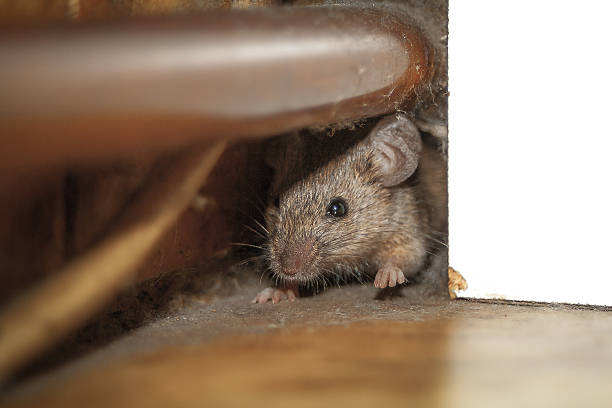Rats are stealthy, resourceful creatures that often make themselves at home before you even realise it. Early detection of infestation is the key to safeguarding your family, house, and peace of mind. Whether you reside in a suburban home or an inner-city apartment, knowing how to identify the signs can save you from costly damage and health hazards. If you suspect rodents in your home, it’s vital to act quickly by arranging rat pest control in Melbourne to prevent the problem from escalating. Recognising the early warning signs and knowing what to look for help you to avoid high rat control prices in the future.
Strange Noises in the Walls or Ceiling
One of the first and most obvious signs of a rat problem is the sound of movement in your walls, roof, or under the floorboards. These noises are usually most noticeable at night when rats are most active.
You may hear scratching, gnawing, or scurrying sounds, especially in areas with insulation or timber framing. These sounds are often mistaken for plumbing issues or other harmless disturbances, but if they persist, rodents could be the culprit.
Rats are agile climbers and can easily navigate through wall cavities, ceilings, and roof spaces. If the noises continue for several nights in a row, it’s time to investigate further or contact a pest control professional.
Droppings and Urine Trails
Another clear sign of a rat infestation is the presence of droppings. Rat droppings are dark brown or black, pellet-shaped, and around 1–2 cm long. They tend to be located in kitchen cabinets, pantries, behind appliances, or in food storage areas.
Fresh droppings are soft and moist, while older ones appear dry and crumbly. Large quantities of droppings indicate a more serious infestation.
In addition to droppings, rats frequently urinate to mark their territory. While urine may not always be visible, it can leave a strong, musky odour in enclosed areas. Blacklight flashlights occasionally expose urine stains on walls and floors. They are health-relevant unhygienic conditions, especially if the rats have touched food or food preparation areas.
Chewed Wires, Furniture, and Materials
Rats have continuously growing teeth, and they gnaw on a variety of materials to keep them trimmed. This behaviour leads to significant damage in homes, particularly to electrical wiring, furniture, cardboard boxes, and plastic.
Chewed wires are especially dangerous, as they pose a serious fire hazard. If you notice exposed electrical cables or your appliances are suddenly malfunctioning, rats could be the cause.
Furniture, skirting boards, and even doors can show signs of gnawing. If you store items in cardboard boxes in sheds, garages, or cupboards, check them for bite marks or shredded materials. Early intervention with rat control services can prevent further destruction and keep your home safe.
Grease Marks and Smudge Trails
As rats move through your home, they often follow the same paths along walls, pipes, and skirting boards. Their bodies leave behind oily residue and dirt from their fur, resulting in dark smudge marks or grease trails.
These marks can appear in areas with high rat traffic, such as near entry points or hidden passageways behind furniture. They’re particularly common in dusty or poorly lit spaces.
While these trails might seem subtle, they are a telltale sign of rodent activity. If the same marks reappear after cleaning, it’s a strong indicator that the rats are still present and active. A professional pest inspection can help identify these routes and treat the infestation effectively.
Nesting Materials and Burrows
Rats build nests from soft, shredded materials like paper, insulation, fabric, and dried plant matter. These nests are usually hidden in warm, dark spaces such as behind walls, inside roof cavities, or beneath floorboards.
You may notice piles of shredded paper or insulation in quiet corners of your home, garage, or attic. Some rats also burrow outside, particularly in garden beds or under decking, and may tunnel into your home’s foundation.
Nests typically contain droppings and urine and may give off a strong odour. Discovering nesting materials or burrows is a strong sign of a settled infestation. Immediate action is necessary to remove the rats and seal off entry points to prevent their return.
Pet Behaviour and Odours
Pets like cats and dogs often detect rodent activity before humans do. If your pet is barking, sniffing, or pawing at areas they usually ignore—such as under appliances or near walls—it may be a sign of rats nearby.
Pets may also show signs of anxiety or hyperactivity when rats are present. Don’t ignore these changes in behaviour, as animals often sense intruders long before visible signs appear.
Additionally, a foul odour is another key indicator of a rat infestation. A persistent, musty smell may come from droppings, urine, or even a deceased rat hidden in a wall cavity or roof. This odour can linger for weeks and may be strongest in enclosed spaces or areas with limited airflow. Addressing it quickly helps prevent health issues and unpleasant living conditions.
Call the Professionals Before It Gets Worse
Spotting even one of these signs should prompt immediate action. Rats reproduce quickly, and what starts as a small issue can become a major infestation in no time. Acting early can help you reduce damage, protect your family’s health, and avoid rising rodent control Melbourne prices.
For expert advice, thorough inspections, and safe, efficient solutions, call Rats Removal Melbourne on 03 8592 4758. Our friendly team is ready to restore your home’s safety and give you peace of mind. Don’t let rodents take over your home — contact us today and take the first step toward a pest-free future.

